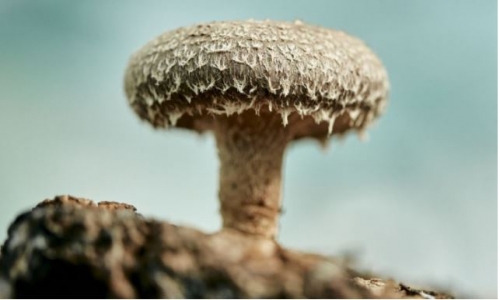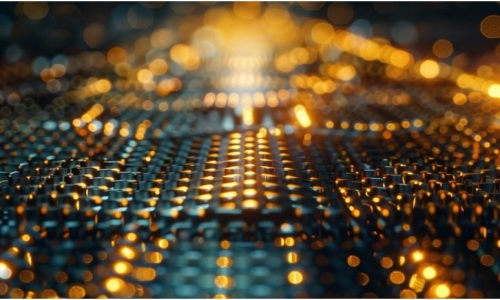


 4:46:12
4:46:12  2024-11-27
2024-11-27  809
809

To find food in the darkness, deep-diving whales rely on their built-in sonar, which bounces soundwaves off potential prey to reveal their location. But to these whales, plastic junk floating in the ocean may also “sound” just like a delicious squid.
A new study suggests plastic debris like shopping bags bear remarkably similar “echoes” to those of squid—likely due to some combination of their shape, size, degree of weathering, and chemical composition, the authors write.
Estimates vary, but it’s likely that millions of metric tons of plastic enter the world’s oceans each year, amounting to a cumulative tens of trillions of plastic fragments.
As it permeates marine environments, it’s also showing up in the guts of marine mammals across hundreds of reported cases, damaging their stomach tissues and causing infection, suffocation, and malnutrition to the point of starvation. Washed-up whales the world over carry tens of pounds of plastic trash in their stomachs, a testament to this pervasive issue.
“Certain animals seem to be almost incapable of not eating plastic in the ocean,” says Mathew Savoca, a National Geographic Explorer and marine biologist at Stanford University who was not involved in the study.
“It’s not because they’re stupid,” he says. “It’s because plastic must be very confusing on a bunch of different sensory channels.”
For animals such as sea turtles, some studies indicate plastic bags and films billowing in the water may simply look similar to foods like jellyfish and squid. Other research has suggested sharks and fish may also confuse plastic for prey due to visual cues.
But that theory breaks down for goose-beaked whales, sperm whales—which are listed as vulnerable by the International Union for Conservation of Nature—and other species that hunt by echolocation thousands of feet below the surface, where it’s impossible to see anything.
So scientists set out to figure out why they, too, are ingesting so much plastic.
Deep-diving toothed whales, or odontocetes, vibrate phonic lips below their blowholes to generate sound, then project it through a fatty organ in their foreheads called the melon. As the sound bounces off objects in the dark, fats in the whales' lower jaws direct it to their inner ears, allowing them to pinpoint prey several hundred feet away.
“It starts off as a click,” says study leader Greg Merrill, a Ph.D student in marine mammalogy at Duke University. But as a whale zeroes in, the clicks “become really rapid, to where those blend together and it's more like a buzz."
For the study, published in October in Marine Pollution Bulletin, Merrill and his colleagues gathered nine plastic items: bags, balloons, and other common trash found in whale guts from North Carolina beaches. Working from their research vessel in May, the team strung the items to a rig underneath the boat and hit them with sound waves at frequencies that toothed whales use to hunt. They repeated the process on five dead squid bodies provided by the University of North Carolina at Chapel Hill, as well as five squid beaks taken from a stranded sperm whale’s stomach.
All plastic items tested, the team found, returned echoes as strong as or stronger than those from the squid. The finding complements those of a similar, preliminary study— presented at the International Confrence on Underwater Acoustics in June, though not yet published in a journal—conducted in a tank of seawater rather than the open ocean.
Plastics whose echoes most overlapped with those of squid, the June study also found, were those often discovered in whale stomachs, such as bags and films.
It's unknown whether deep-diving toothed whales use any means other than echo strength to distinguish food from not-food—but experts doubt it. Mouthfeel certainly doesn’t factor in.
“They don’t really chew and taste like us…it’s more like suction,” says Laura Redaelli, a Ph.D student in marine biology at the Marine and Environmental Sciences Centre, Madeira, in Portugal and lead author of the June study.
As soon as inedible items enter their mouths, she says, “it’s a little bit too late for them to realize.”
And why would they? Before plastic existed, Redaellli and her colleagues note, anything a whale encountered in the deep ocean that returned a strong enough echo was probably biological—and likely edible.
“They’re not expecting to see anything in the water other than food,” Merrill says, “so if they encounter something with a signal, they’re going to go after it.”
Savoca, who studies marine animal plastic consumption, had long suspected that toothed whales’ taste for plastic was linked to their sonar. But even so, he says, “How powerfully [plastic] mimicked their prey—that was a little surprising to me.”
He cautions that because we can’t observe whales in the deep ocean, the studies might not perfectly portray how they perceive plastics in reality. But he feels the researchers did an admirable job of approximating real conditions with the means available.
And it’s important research, considering the growing amount of junk in the ocean and the consequences to animals who consume it.
“It’s the worst kind of suffering,” Savoca says. “They’re in pain, they’re starving, but they think they’re eating, so they don’t understand what’s going on.”
Plastics manufacturers could try engineering plastics to be less acoustically similar to prey, Redaelli says—but she also acknowledges this might only make it easier for whales to get entangled in items like plastic netting. Another solution might swap existing plastics for biodegradable materials that break down rapidly in the ocean or in whale stomachs.
All three experts agree on the need to reduce plastic production in the first place. The ideal approach, Savoca and Merrill say, involves policy changes and diverting waste streams from the ocean, especially targeting unnecessary single-use items.
“Maybe we can hope that, at some point, [whales] will learn the difference” between plastic and prey, Redaelli says. But until then, “the more plastic we keep putting [in], the more animals are going to die."
Reality Of Islam |
|

This is the

A computer

Auburn Univ

Poisoning i
 9:3:43
9:3:43
 2018-11-05
2018-11-05
10 benefits of Marriage in Islam
 7:5:22
7:5:22
 2019-04-08
2019-04-08
benefits of reciting surat yunus, hud &
 9:45:7
9:45:7
 2018-12-24
2018-12-24
advantages & disadvantages of divorce
 11:35:12
11:35:12
 2018-06-10
2018-06-10
 6:0:51
6:0:51
 2018-10-16
2018-10-16
 3:43:50
3:43:50
 2022-11-05
2022-11-05
 7:34:7
7:34:7
 2023-02-28
2023-02-28
 8:21:9
8:21:9
 2018-06-21
2018-06-21
 7:6:7
7:6:7
 2022-03-21
2022-03-21
 10:43:56
10:43:56
 2022-06-22
2022-06-22
 1:38:41
1:38:41
 2021-12-08
2021-12-08
allah will not answer all your prayers
 6:56:28
6:56:28
 2022-01-01
2022-01-01
 5:41:46
5:41:46
 2023-03-18
2023-03-18
| LATEST |